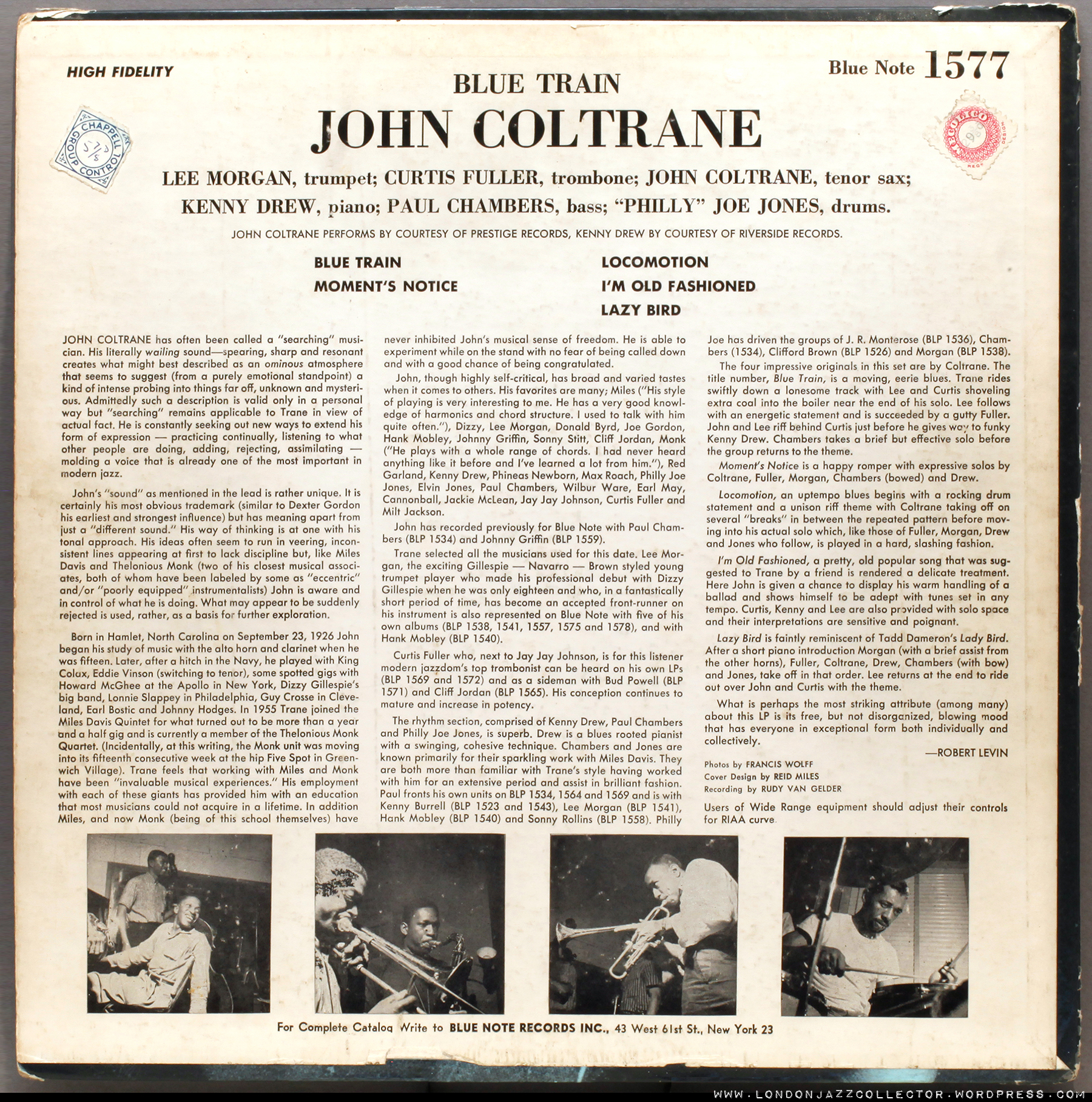
John Coltrane kicked his addictions and recorded the hard bop harmonics of this classic jazz juggernaut. After being fired by Miles Davis in the Spring of 1957 from his "First Great Quintet" because of his problems with heroin and alcohol, Coltrane locked himself away in his room for four days to detox. He would later consider: "During the year 1957, I experienced by the grace of God, a spiritual awakening which was to lead me to a richer, fuller, more productive life. At that time, in my gratitude, I humbly asked to be given the means and privilege to make others happy through music."
Coltrane played with Thelonius Monk's quartet for a while; but was unable to record with them due to contractual problems. Coltrane was signed to Prestige; but they gave him permission to honor his verbal agreement with Blue Note founder Alfred Lion to do an album for the label. Lion produced the sessions at Van Gelder Studio in Hackensack, New Jersey that became 'Blue Train'. Coltrane's tenor saxophone is backed up by trumpeter Lee Morgan, trombonist Curtis Fuller, pianist Kenny Drew, and the rhythms section from the Miles Davis Quintet: drummer Philly Joe Jones and bassist Paul Chambers. 'Blue Train' was his only album for Blue Note.
Coltrane would later explain his musical approach: "About this time, I was trying for a sweeping sound. I started experimenting because I was striving for more individual development. I even tried long, rapid lines that Ira Gitler termed “sheets of sound” at the time. But actually, I was beginning to apply the three-on-one chord approach, and at that time the tendency was to play the entire scale of each chord. Therefore, they were usually played fast and sometimes sounded like glisses. I found there were a certain number of chord progressions to play in a given time, and sometimes what I played didn’t work out in eighth notes, 16th notes, or triplets. I had to put the notes in uneven groups like fives and sevens in order to get them all in. I thought in groups of notes, not of one note at a time. I tried to place these groups on the accents and emphasize the strong beats—maybe on 2 here and on 4 over at the end. I would set up the line and drop groups of notes—a long line with accents dropped as I moved along. Sometimes what I was doing clashed harmonically with the piano—especially if the pianist wasn’t familiar with what I was doing—so a lot of times I just strolled with bass and drums."
http://www.johncoltrane.com/
'Blue Train'
full album:
Side one
1. "Blue Train" John Coltrane 10:43
2. "Moment's Notice" John Coltrane 9:10
Side two
1. "Locomotion" John Coltrane 7:14
2. "I'm Old Fashioned" Johnny Mercer, Jerome Kern 7:58
3. "Lazy Bird" John Coltrane 7:00

No comments:
Post a Comment